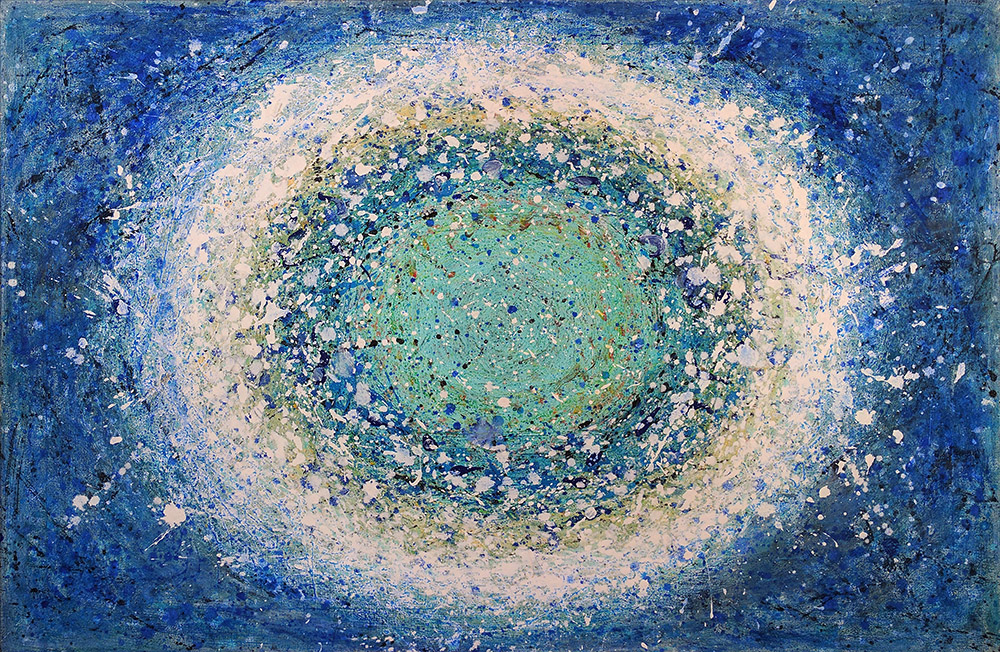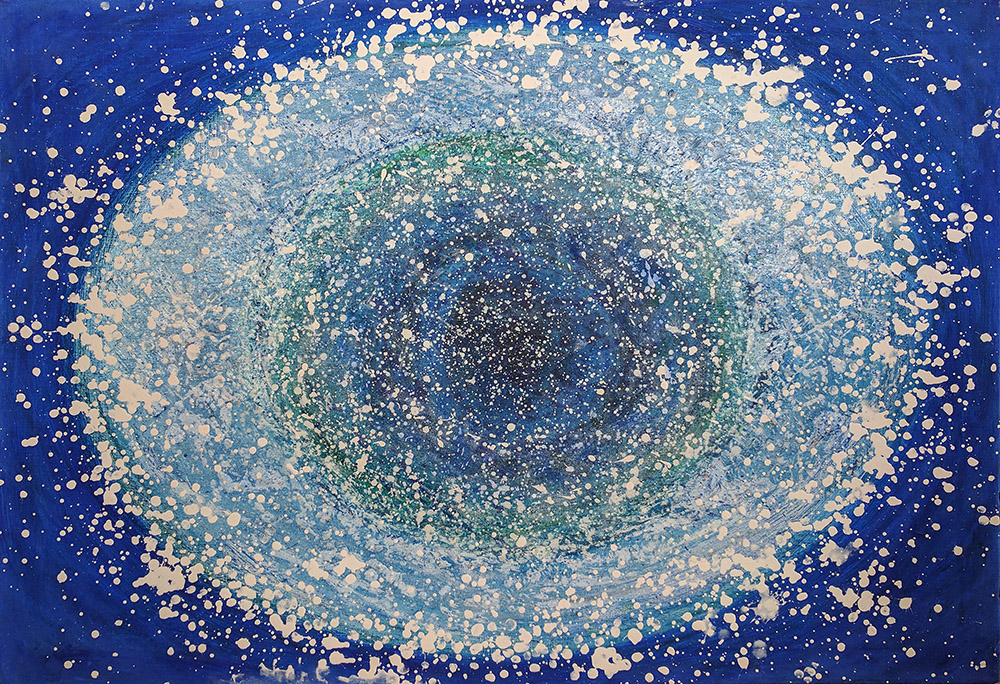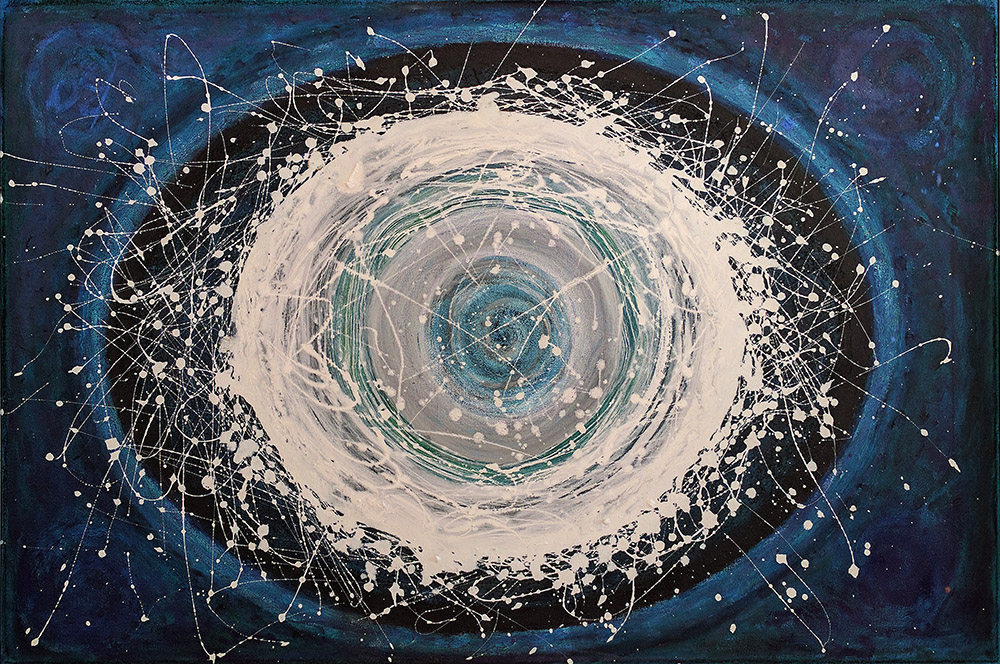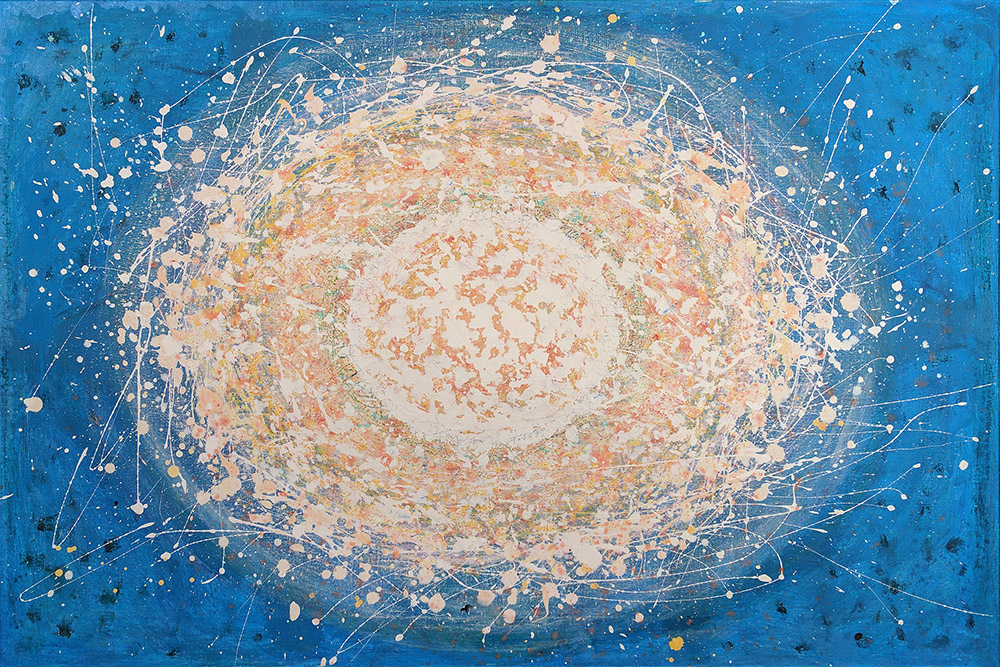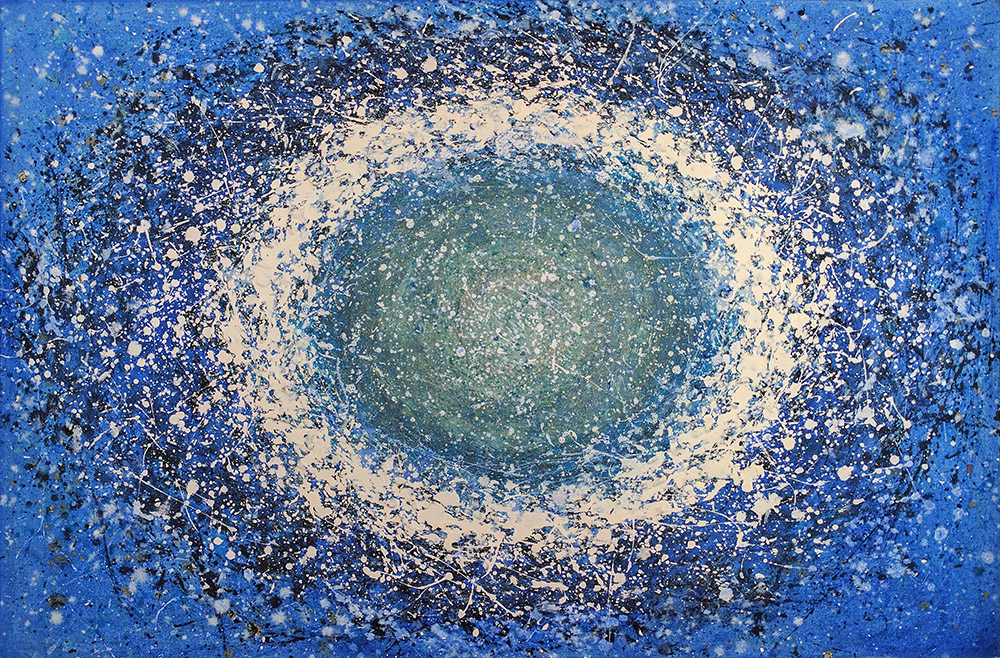The versatile painter Alberto Morrocco RSA, OBE, described Bo Jeffares Sekine as a painter of high commitment and intelligence, focusing on "interpretive landscape, the kind of landscape painting that is not primarily concerned with typographical description so much as emotional and imaginative reaction to atmosphere and place, creating optimistic paintings with distilled joy in them."
The Scotsman wrote of her first major exhibition in Glasgow, Earth and Space, that it was 'an extraordinarily energetic and celebratory body of work, expressing a deep perfectibility of man's relationship with landscape', concluding that 'in the confident sweep of her drawing Bo draws on a colourful sensibility shaped by a career of travel and teaching. Ideas about landscape deriving from Turner are combined with surrealist touches and delicate sensitivity to the Japanese philosophy of the elements.'
The Glasgow Herald, reviewing Art and Nature, in Brussels, compared Japanese Zen influence in the work of Van Gogh and Sam Francis, stating 'One quarter Belgian, One quarter Scottish and half Irish, married to a Japanese Noh actor, Bo creates in her recent work a new cross-fertilisation of European traditions with Oriental ideas, the results of which are very stimulating and exciting.... She has used the freedom and deliberate refinement of this Japanese poetic reduction to liberate her spirit and her painting. I was particularly impressed by Tuscan Road - so simple, yet so delightfully poetic, using a Ying and Yang curve, where the artist looks beyond basic statements of landscape, to an optimistic view of creation ... this artist [is] a welcome addition to our Brussels cultural mix and her paintings will, I am sure, build many bridges between east and west in the future.
Professor Anne Crookshank, commenting on her work, has written, 'Bo paints landscapes but also deeply thoughtful near abstract pictures based on visualising global ideas in a colourful and painterly fashion. They demand and deserve close attention.'
David Irwin, Professor of Art History at the University of Aberdeen, place Bo Jeffares Sekine's work in the European landscape traditions of inspired romantic symbolists and expressionistic colourists. Belief in the evocative power of colour and light can give an added dimension to brightly coloured canvas. 'Her paintings are visually joyous, behind which lies an optimistic view of man's role and survival in the universe. Her paintings are about, as she would put it, 'paradise': man in harmony with the universe.
That universe has expressed itself in some of her most recent paintings by drawing ever closer to the primeval forces that created the world as we know it. Nature's dynamism writhes through her landscapes, contorting them into exciting rhythmical curves. These same forces erupt as watery volcanoes of white and blue. And she is not intimidated by the vast expanse out there, with its threatening black holes. On the contrary, she wants to convey her joyous response to those outer mysteries of science through the medium of paint, and woo her viewers into hopeful, not pessimistic, views of the future. She sees art, and hers in particular, as having an important formative role to play in the creation of that optimism.
Her studio on the Fife coast is surrounded by large stretches of flat, fertile fields, scarcely punctuated by buildings, set against a backdrop of the sea and under an immensity of sky. The vastness of nature is all around her, and is captured on her canvases. That is what forms the essence of her art.'
After exhibiting in Dublin, London etc and enjoying an honorary fellowship at the Tokyo International University of Arts, Bo moved to Cornwall.
Here, Frank Rhurmund describes her paintings 'as pleasing as they are peaceful, and satisfying as they are stimulating.'
Reviewing Landscape: Earth Sea Sky at the Penwith Gallery in St. Ives in 2016, combined with the launch of CREATIVITY: Nature and Us, he says her work has always been 'very much concerned with nature, not to mention the universe.
An artist who might be described as being a child of the universe, her background could hardly be more universal. Born in Dublin, with Scottish and Belgian ancestors, she was brought up in Australia where she began painting as a child, and later educated in this country and Eire. She gained her first degree in Art History at the University of Reading, an MA in 19th century Art Criticism at the Courtauld Institute University of London, followed by a Ph.D on the Artist in 19th Century Literature at Trinity College, Dublin.
She has since taught English Literature at Trinity and at Tamagawa University in Tokyo, and Art History at the University of Stirling, Scotland. She was an animateuse of the arts for the education authority in Fife, and was a director of academic advisory services. Her publications range from The Artist in 19th Century Fiction to studies of The School for Scandal, The Beaux Stratagem, The Way of the World, Treasure Island and Landscape Painting, a best seller.
Bo Jeffares Sekine visited Newlyn at the invitation of Terry Frost, who she first met as a schoolgirl when he came around with other Gregory Fellows in Leeds where her father was a Professor of English, and met again when studying Fine Art at the University of Reading, and again much later, at a party she gave for him in Scotland. It was then that he extended the invitation to visit him in Newlyn. As she says: "I arrived in January to champagne, camellias, and a turquoise sea. I decided then to settle in Newlyn and I've appreciated it and its community ever since."
To quote from her book: "Optimistic imagery provides a positive charge, contributing to the universal feel-good factor: Whether deeply sensitive or deceptively casual, positive pictures provide heart-warming catalysts. Samuel Palmer's harvest moons illuminate rich fertile fields to evoke nature's intangible mysteries. Matisse's palmate leaves evoke nature's abundance with jazzy joy. Both Work."
Appreciated when published by different minds, including Sam Thorne, artistic director of Tate St. Ives, and David Sanderson, director of the Scottish Environmental Research Centre, this book links many creative ways of interacting with our world.
She uses her paintings as a means of suggesting how landscape can explain personal growth and evolution as we each plot our own road through life. They reflect all manner of influences, from the minimalism of Japan where she lived and worked to the bright Mediterranean colour which she first absorbed as a child when in Australia and later when living in France and Italy. While they evoke the beauty of the natural world in today's industrial age, at the same time they also owe something to her interest in all forms of healing. She dedicates her book CREATIVITY: Nature and Us to everyone because everyone is an earth artist in their own ways.


